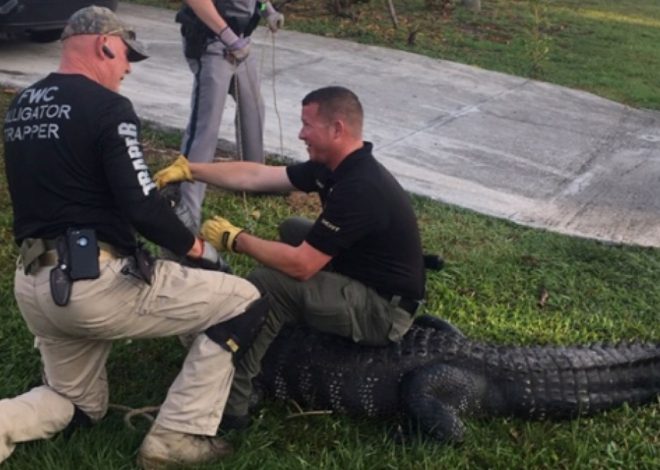
What is Feline Leukemia Virus ?
Feline Leukemia Virus (FeLV) is a retrovirus that infects cats and can cause a variety of diseases, including leukemia, immunosuppression, and anemia. It is spread through contact with infected saliva or nasal secretions and can be transmitted from mother to kitten during pregnancy or nursing.
FeLV can cause a range of symptoms, including loss of appetite, poor coat condition, infections, and cancer, and can lead to a shorter lifespan if left untreated.
12 Symptoms of feline leukemia virus in cats
The common symptoms of feline leukemia virus (FeLV) in cats include:
1. Loss of appetite
2. Weight loss
3. Poor coat condition
4. Persistent fever
5. Inflammation of the gums and mouth (gingivitis and stomatitis)
6. Skin, urinary, and upper respiratory tract infections
7. Persistent diarrhea
8. Seizures, behavior changes, and other neurological disorders
9. A variety of eye conditions
10. Pale gums (anemia)
11. Enlarged lymph nodes
12. Chronic infections
These symptoms are caused by the FeLV virus attacking the cat’s white blood cells and compromising its immune system. This leaves the cat more susceptible to a wide range of secondary infections and diseases, including cancer like lymphoma and lymphosarcoma. The symptoms can progress over time as the virus weakens the cat’s health.
How feline leukemia virus is diagnosed in cats

Feline Leukemia Virus (FeLV) in cats is typically diagnosed through a blood test called an ELISA test. This test is quick and routinely done in veterinary clinics. If a cat tests positive for FeLV, additional laboratory tests may be necessary.
Veterinarians may recommend the test when first adopting a cat, before vaccinating against the disease, after exposure to the virus, or if the cat is ill.
The test may need to be repeated in 30 days if the risk of infection is high. Additionally, if a cat goes outside or lives with another cat that has the virus, veterinarians may recommend repeating the test every year to monitor for FeLV infection.
Which test is more commonly used to diagnose feline leukemia virus?
The ELISA (Enzyme-Linked Immunosorbent Assay) test is more commonly used to diagnose Feline Leukemia Virus (FeLV) in cats. ELISA tests are widely available, can detect soluble FeLV antigen as early as 30 days after exposure, and are routinely used in veterinary clinics as point-of-care tests for FeLV detection.
What is the elisa test for feline leukemia virus?
The ELISA (Enzyme-Linked Immunosorbent Assay) test for Feline Leukemia Virus (FeLV) is a diagnostic test that detects the presence of FeLV antigen in a cat’s blood sample.
Key points about the ELISA test for FeLV:
1. The ELISA test can detect FeLV antigen as early as 30 days after a cat is exposed to the virus.
2. It is a widely available and commonly used point-of-care test in veterinary clinics to screen for FeLV infection.
3. The ELISA test can be performed on serum, plasma, or whole blood samples collected from cats.
4. Studies have shown the ELISA test to have good sensitivity and specificity, ranging from 85% to 100% in detecting FeLV antigen.
5. The ELISA test is often used in combination with other tests, like the IFA (Immunofluorescent Antibody) test, to confirm positive results.
6. The ELISA test is considered a reliable and convenient method for routine FeLV screening and diagnosis in veterinary practice.
The ELISA test is a widely used, sensitive, and specific diagnostic tool that allows veterinarians to detect the presence of FeLV antigen in cats, which is an important step in identifying and managing FeLV infections.

Some other tests that can be used to diagnose feline leukemia virus
In addition to the ELISA (enzyme-linked immunosorbent assay) test, other tests that can be used to diagnose Feline Leukemia Virus (FeLV) include:
1. IFA (Immunofluorescent Antibody) Test: This test is often used to confirm a positive ELISA result and requires a blood or bone marrow sample.
2. Western Blot Test: This test is also used to confirm a positive ELISA result and is sent to a qualified diagnostic laboratory[
3. TaqMan Real-Time Polymerase Chain Reaction (PCR): This test is used to quantify the viral load and can help assess the current stage of infection.
4. Proviral DNA Loads by Real-Time PCR: This test is used to quantify the proviral DNA load and can help assess the current stage of infection.
5. Rapid Immunomigration (RIM) FeLV Tests: These tests detect soluble FeLV antigen as early as 30 days after infection and are often used in clinics.
6. Point-of-Care (POC) ELISA Tests: These tests are used in clinics and detect soluble FeLV antigen as early as 30 days after infection.
7. Flow Cytometry: This test is used to provide additional diagnostic information, such as cellular phenotyping.
8. Immunocytochemical Analysis: This test is used to provide additional diagnostic information, such as cellular phenotyping.
9. Biopsy with Histologic Examination: This test is used to confirm the diagnosis of FeLV-induced neoplasia.
10. Cytologic Examination of Fine-Needle Aspirates: This test is used to reveal malignant lymphocytes.
These tests are used in combination to provide a comprehensive diagnosis and to monitor the progression of the infection. The choice of test depends on the stage of infection, the cat’s health status, and the availability of the test in the clinic or laboratory.
Difference between elisa and rim tests for feline leukemia virus
The difference between ELISA (Enzyme-Linked Immunosorbent Assay) and RIM (Rapid Immunomigration) tests for Feline Leukemia Virus (FeLV) lies in their sensitivity, specificity, and the timing of detection.
ELISA Tests:
- ELISA tests detect soluble FeLV antigen as early as 30 days after exposure.
- They have shown good sensitivity and specificity, ranging from 85% to 100% in one study.
- ELISA tests are widely available and can be performed on serum, plasma, or whole blood.
- They are a common point-of-care (POC) test used in clinics to detect FeLV antigen.
- ELISA tests can be used to detect both early and established infections.
RIM Tests:
- RIM tests also detect soluble FeLV antigen as early as 30 days after exposure.
- They are another type of POC test used in clinics to detect FeLV antigen.
- RIM tests have shown similar sensitivity and specificity to ELISA tests, ranging from 85% to 100% in one study.
- RIM tests are often used in combination with ELISA tests to confirm positive results.
Key Differences between elisa and rim tests
- Both ELISA and RIM tests are POC tests used in clinics to detect FeLV antigen.
- They have similar sensitivity and specificity, ranging from 85% to 100% in one study.
- ELISA tests can be performed on serum, plasma, or whole blood, while RIM tests are typically performed on whole blood.
- ELISA tests are more commonly used in clinics, while RIM tests are often used in combination with ELISA tests to confirm positive results.
In summary, both ELISA and RIM tests are used to detect FeLV antigen, but they differ in their performance characteristics and the timing of detection. ELISA tests are more widely used in clinics and can detect both early and established infections, while RIM tests are often used in combination with ELISA tests to confirm positive results.
Treatment options for feline leukemia virus in cats
The treatment options for Feline Leukemia Virus (FeLV) in cats are primarily focused on managing the symptoms and secondary infections that arise due to the compromised immune system. There is no cure for FeLV, but with proper care, some infected cats can live without major complications for years.
Management of Secondary Infections:
- Antibiotics may be prescribed to treat secondary bacterial infections that can result from the disease.
- Appetite stimulants or anti-inflammatory medications may be prescribed if the cat has a poor appetite or fever.
- Blood transfusions may be recommended for cats with severe anaemia.
Prevention and Control:
- Infected cats should be kept strictly indoors to reduce the risk of other infections and to prevent spreading the virus to other cats.
- Vaccination against other feline viruses is recommended, but vaccination against FeLV itself is not effective once a cat is infected.
- Neutering is recommended for infected cats.
- Regular veterinary care, proper feeding, minimal stress, and avoidance of secondary infections are important for maintaining the cat’s quality of life.
Immunomodulating Compounds:
Some studies have shown that immunomodulating compounds, such as the paramunity inducer PIND-ORF, can cure 80 to 100% of FeLV-infected cats from viremia. These compounds have been used in Germany and other European countries to treat FeLV infection.
Antiviral Chemotherapy
- Antiviral chemotherapy, such as AZT and PMEA, has been used to treat FeLV seropositive cats with clinical symptoms.
- Genomic Characterization and Transgene Expression:
- Research has focused on the genomic characterization of Orf virus and the development of novel sites for multiple transgene expression, which could potentially lead to new treatment options.
Broadening the Use of Antiretroviral Therapy:
There has been discussion about broadening the use of antiretroviral therapy for FeLV, but this is still an area of ongoing research.
In summary, while there is no cure for FeLV, management of secondary infections and prevention of further complications are key to maintaining the quality of life for infected cats. Research into immunomodulating compounds, antiviral chemotherapy, and genomic characterization may lead to new treatment options in the future.

How is feline leukemia virus transmitted between cats
Feline Leukemia Virus (FeLV) is transmitted between cats through direct contact, primarily through the exchange of saliva, which contains the virus. This transmission can occur through various activities that involve close contact between cats, such as:
1. Mutual Grooming: Cats that groom each other can transfer the virus through their saliva.
2. Mating: Cats that mate can transfer the virus through their saliva and other bodily fluids.
3. Sharing Food and Water: Cats that share food and water bowls can transfer the virus through their saliva.
4. Sharing Litter Boxes: Cats that share litter boxes can transfer the virus through their saliva and other bodily fluids.
5. Bite Wounds: Cats that bite each other can transfer the virus through their saliva.
6. From Mother to Kittens: FeLV can be transmitted from a mother cat to her kittens through the placenta during pregnancy or through nursing.
The virus is fragile and cannot survive longer than a few hours outside of a cat’s body, which makes it less contagious than other viruses. However, the virus can be present in a cat’s saliva, nasal secretions, urine, and faeces, making it possible for transmission to occur through close contact activities.
It’s important to note that FeLV is not contagious to people or other pets, such as dogs or rabbits.
Ways to prevent feline leukemia virus in cats
Preventing Feline Leukemia Virus (FeLV) in cats involves a combination of vaccination, testing, and management strategies. Here are some ways to prevent FeLV in cats:
1. Vaccination: A vaccine is available to prevent FeLV infection. Your veterinarian will tell you whether it is appropriate for your cat.
2. Testing: Testing should be done in the following situations:
- When you first adopt your cat.
- Before vaccinating against the disease.
- After exposure to the virus (for example, after a cat bite wound).
- If your cat is ill.
3. Identification of Infected Cats: Identification of infected cats remains an important strategy for preventing new infections.
4. Prevention of Secondary Infections: Infected cats should be kept strictly indoors to reduce the risk of other infections and to prevent spreading the virus to other cats.
5. Proper Care and Nutrition: Infected cats should receive proper care and nutrition to minimize the impact of the disease.
6. Avoiding Stress: Infected cats should be kept in a low-stress environment to minimize the impact of the disease.
7. Avoiding Exposure to Other Cats: Infected cats should not be exposed to other cats that may have spreadable diseases.
8. Neutering: All infected cats should be neutered.
9. Monitoring: Infected cats should visit the veterinarian at least every 6 months to monitor for disease-related disorders and secondary infections.
10. Prevention of Transmission: The virus is unstable in the environment and is susceptible to all common detergents and disinfectants. Simple precautions such as routine cleaning with disinfectants will eliminate the virus in the environment.
11. Vaccination of Kittens: All kittens should receive the two-dose FeLV vaccination as a component of the routine initial vaccination series and should also receive a booster vaccination 1 year later.
12. Annual Revaccination: Annual revaccination after maturity would depend on the cat’s risk of FeLV exposure.
By following these prevention strategies, you can help reduce the risk of FeLV infection in your cat and ensure they lead a healthy and happy life.
Can feline leukemia virus be cured in cats?
Unfortunately, there is currently no definitive cure for Feline Leukemia Virus (FeLV) in cats. Affected cats are managed medically by treating any secondary infections that can result from the disease.
Continue reading: What is Neutering ?


